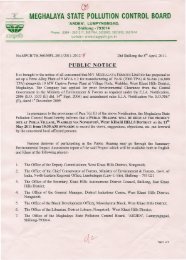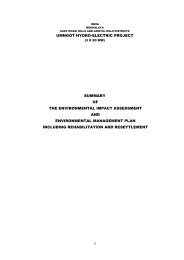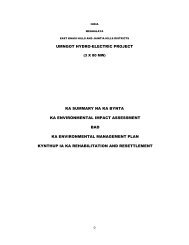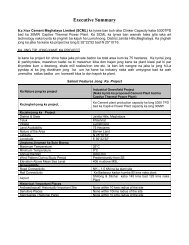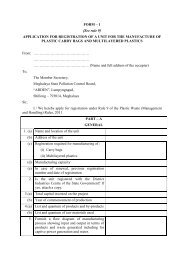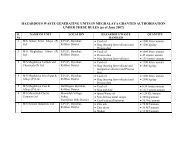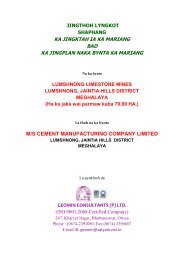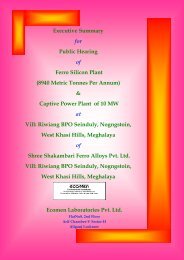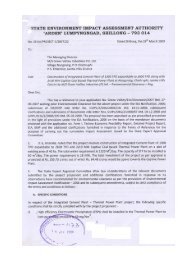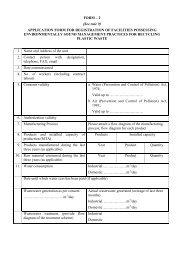chapter - 1 introduction - Meghalaya State Pollution Control Board
chapter - 1 introduction - Meghalaya State Pollution Control Board
chapter - 1 introduction - Meghalaya State Pollution Control Board
You also want an ePaper? Increase the reach of your titles
YUMPU automatically turns print PDFs into web optimized ePapers that Google loves.
Hills Cement Co. Limited.<br />
The measures envisaged for controlling water pollution will be contain the<br />
water pollution within tolerance limit as specified in MOEF notifications and<br />
other related statutory norms. The Waste Water generated from the various<br />
Plants will be let out after proper treatment in order to reduce pollutants in the<br />
wastewater within the acceptable limits.<br />
There will be temporary houses along with canteen and toilet facilities. Water<br />
for washing & sanitary requirement will be meet out from the stored rainwater.<br />
There will be negligible impact on the surface water quality. The drinking<br />
water will be purchased from out side. It is proposed to utilize maximum<br />
rainwater from the stored reservoir.<br />
A) Domestic Effluent<br />
60 m 3 / day waste water will be treated in the effluent treatment plant<br />
based on activated sludge process. The treated waste water will be<br />
utilized quantitatively for green belt and plantation in the area. The<br />
plant will be based on zero discharge principle. Thus there is no<br />
discharge of effluents envisaged from the plant.<br />
B) Industrial Effluent<br />
- To prevent water pollution by oil/grease and sewage waste, following<br />
control measures are proposed to be implemented:<br />
- Leak proof containers will be used for storage and transportation of<br />
oil.- Water quality monitoring will be done regularly.<br />
- Workshop effluent will be passed through pit / grease trap and<br />
recirculated.<br />
- “Demineralization plant regeneration chemicals” will be first led to the<br />
neutralization pit and then to the common effluent pit<br />
- Waste water from potable water system, Boiler blow down, CT blow<br />
down and Waste water from clarifier will be directly led to the common<br />
effluent pit<br />
- Thus about 160 M 3 / day treated water will be available from the<br />
common effluent pit which will be used for dust suppression, gardening<br />
etc.<br />
Wastewater management:<br />
Principle of “Zero Discharge” will be adopted. There is no waste water<br />
generated from the cement plant except domestic effluent from the colony. All<br />
effluent from demineralization plant, where chemical will be used, shall be<br />
<strong>Pollution</strong> <strong>Control</strong> Consultants (India) Pvt. Ltd. 100



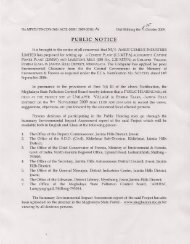
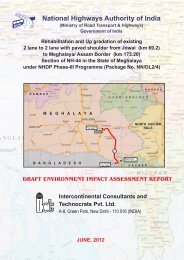

![[FORM I] - Meghalaya State Pollution Control Board](https://img.yumpu.com/49771786/1/190x245/form-i-meghalaya-state-pollution-control-board.jpg?quality=85)

